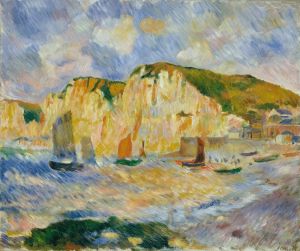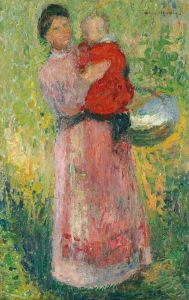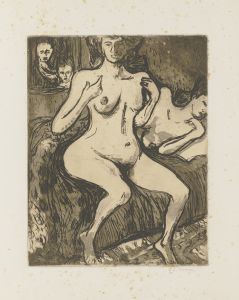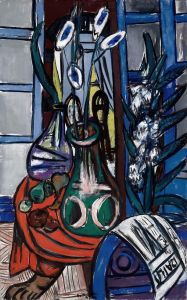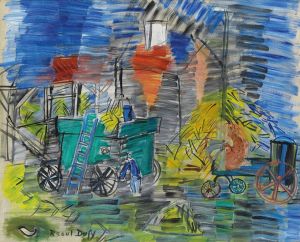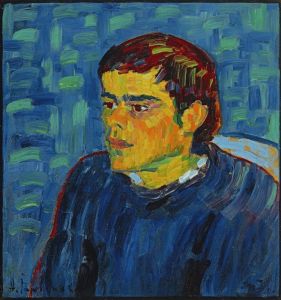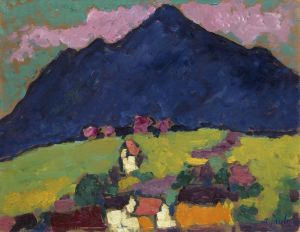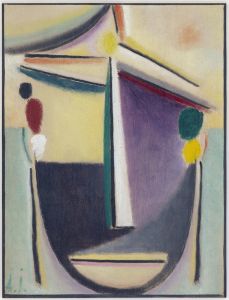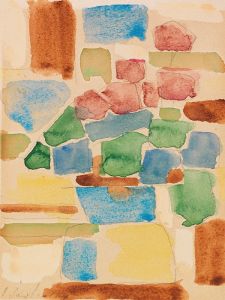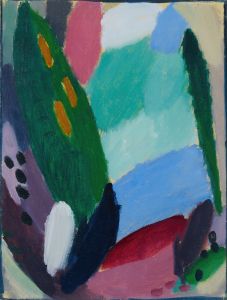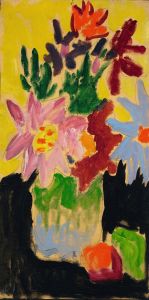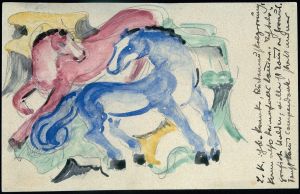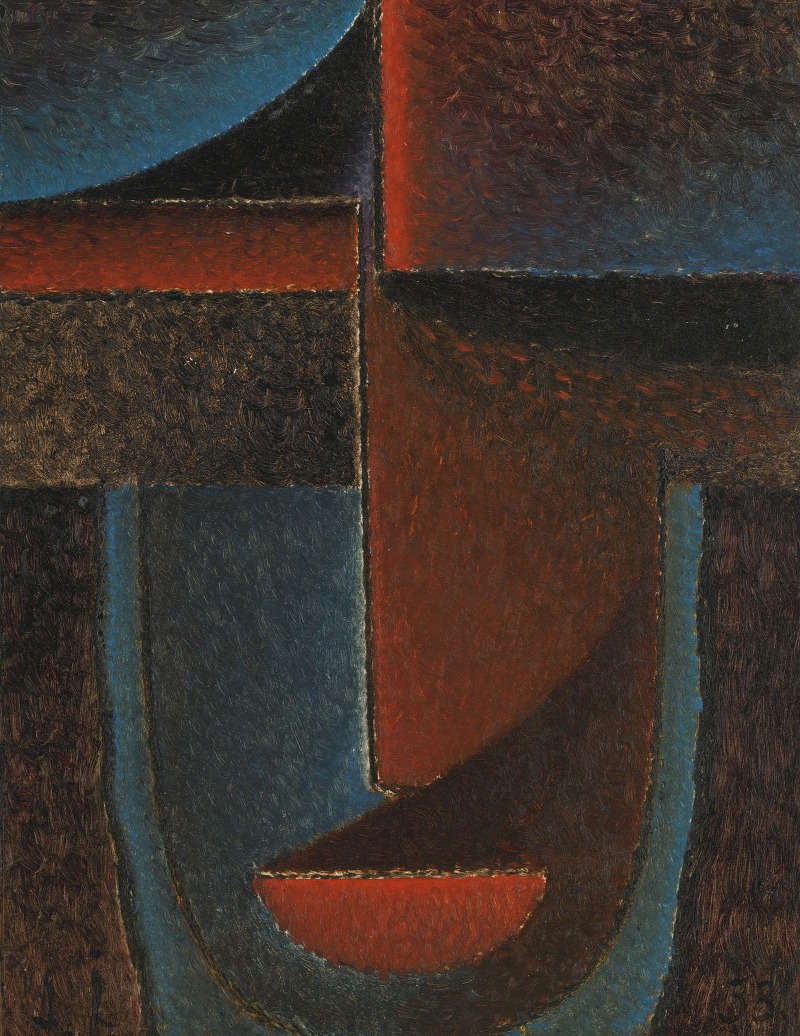
Abstrakter Kopf; Blau-Rot
A hand-painted replica of Alexej von Jawlensky’s masterpiece Abstrakter Kopf; Blau-Rot, meticulously crafted by professional artists to capture the true essence of the original. Each piece is created with museum-quality canvas and rare mineral pigments, carefully painted by experienced artists with delicate brushstrokes and rich, layered colors to perfectly recreate the texture of the original artwork. Unlike machine-printed reproductions, this hand-painted version brings the painting to life, infused with the artist’s emotions and skill in every stroke. Whether for personal collection or home decoration, it instantly elevates the artistic atmosphere of any space.
Alexej von Jawlensky was a Russian expressionist painter, known for his vivid use of color and bold, abstract forms. One of his notable works is "Abstrakter Kopf; Blau-Rot" (Abstract Head; Blue-Red), which is part of his series of abstract head paintings. This series is significant in Jawlensky's oeuvre as it marks a period where he focused on the spiritual and emotional expression through simplified forms and vibrant colors.
Jawlensky was born in 1864 in Torzhok, Russia, and later moved to Germany, where he became associated with the expressionist movement. His work was influenced by his interactions with other artists such as Wassily Kandinsky and the members of the Blue Rider group. Jawlensky's style evolved over the years, moving from more representational forms to abstract compositions that emphasized color and form over realistic depiction.
"Abstrakter Kopf; Blau-Rot" is a quintessential example of Jawlensky's mature style, where he distilled the human face into a series of geometric shapes and lines. The painting features a face composed of bold, flat areas of color, primarily in shades of blue and red, which are typical of the emotional intensity he sought to convey. The use of color in this work is not merely decorative but serves to express deeper spiritual and emotional states, a hallmark of Jawlensky's approach to abstraction.
The abstract head series, including "Abstrakter Kopf; Blau-Rot," was created during a time when Jawlensky was deeply engaged with the idea of conveying inner experiences and emotions through art. This period was marked by personal and professional challenges, including the impact of World War I and his subsequent displacement. Despite these difficulties, Jawlensky continued to explore the potential of color and form to express the universal human condition.
Jawlensky's work, including "Abstrakter Kopf; Blau-Rot," is often associated with the broader expressionist movement, which sought to depict subjective emotions and responses to the world rather than objective reality. His paintings from this period reflect a synthesis of influences, including Russian icon painting, Fauvism, and the spiritual abstraction of his contemporaries.
The painting is characterized by its simplicity and the reduction of the human face to its essential elements. This abstraction allows viewers to engage with the work on an emotional level, interpreting the colors and forms in a personal way. Jawlensky believed that art should transcend the material world and connect with the spiritual, a belief that is evident in the meditative quality of his abstract head series.
"Abstrakter Kopf; Blau-Rot" is housed in various collections and continues to be studied and appreciated for its contribution to the development of abstract art. Jawlensky's work has influenced subsequent generations of artists who have sought to explore the expressive potential of color and form. His legacy is evident in the continued interest in his paintings and the ongoing exhibitions and retrospectives that celebrate his contribution to modern art.
In summary, "Abstrakter Kopf; Blau-Rot" by Alexej von Jawlensky is a significant work that exemplifies the artist's exploration of abstraction and emotional expression through color and form. It reflects his commitment to creating art that communicates on a spiritual level, transcending the boundaries of traditional representation.






